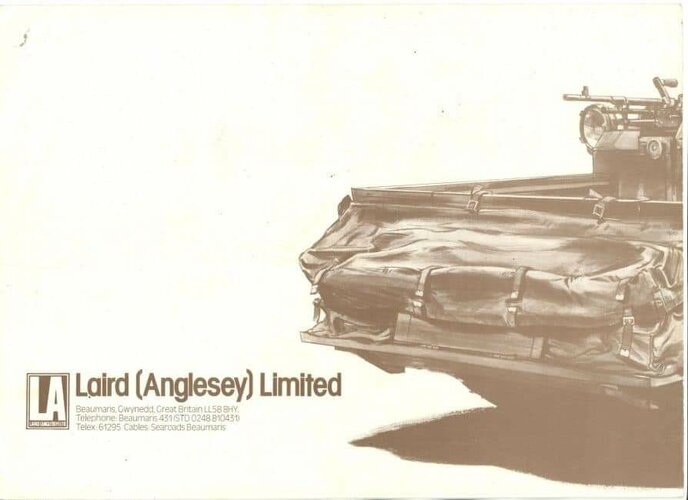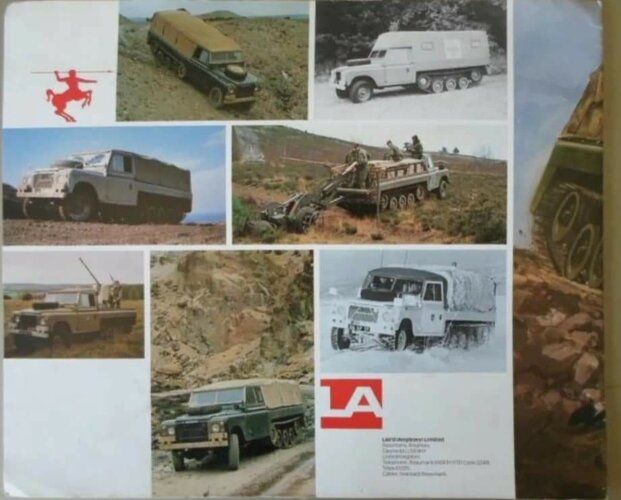There are actually two basic reasons for building a halftrack, both not really valid anymore. If one looks at the heyday of halftracks, i.e. the thirties and forties of the previous century, one should differentiate between the US M3 halftrack and the German halftracks (actually three-quarter tracks). The US M3 was basically a 6x6, lightly armoured truck, with the rear two axles replaced by track assemblies. This reduced the ground pressure and increased the traction on soft underground such as mud or sand.
The raison d'etre for the German three-quarter tracks was different. To understand this, one needs to understand a couple of technical facts. Firstly: For a fully tracked vehicle, there is an ideal ratio between the length of track on the ground and the distance the tracks are apart. If the ratio increases much above about 1,5, for instance, if the tracks are 2 metres apart and the length of track on the ground is greater than 3 metres, steering the vehicle becomes increasingly difficult, and when the vehicle turns, there is increased strain on the steering mechanism, the tracks, road-wheels, etc. The risk of breakage or of the tracks coming off is markedly increased. The second salient fact is that engines were large and weak, 80 years ago; even petrol (gasoline) engines. The best military vehicle engines at that time developed no more than 30 hp per litre displacement, on petrol varying from 70-80 octane. British "pool" petrol, I believe, was 70 octane, German army benzine was 74 octane and US gasoline was 80 octane.
What the Germans wanted were fully tracked vehicles that could pull useful loads (artillery, mostly), i.e. were relatively powerful, and could carry the gun crew and some ammunition, i.e. were relatively spacious. Now, let's look at the Sd. Kfz. 6. The tracks were 1,7 metres apart and the length of track on the ground was 2 metres. Let's assume this was a fully tracked vehicle. If you drop your (large) engine and transmission inside this package, there will be very little space left for gun crew, ammunition, etc. So, the Germans hung the engine and part of the transmission out in front and supported it with a steering axle. This left much more space at the back for gun crew, etc. Although the front wheels could steer, steering was mainly accomplished by the Cletrac steering mechanism attached to the steering wheel. It functioned like a fully tracked vehicle, to a large extent.
The Centaur was like the M3: the tracks provided increased mobility on rough terrain compared to similar sized wheeled vehicles. The disadvantage compared to wheeled vehicles is that a halftrack cannot travel long distances on roads: they have to be transported on trucks. I agree that the disadvantages, and cost, outweighed the possible advantages of such a modification. A couple might have been useful on the Falklands though, and could have been landed by helicopter!
 20241027_124159.jpg2.8 MB · Views: 54
20241027_124159.jpg2.8 MB · Views: 54 20241027_124316.jpg2.9 MB · Views: 48
20241027_124316.jpg2.9 MB · Views: 48 20241027_124311.jpg3.3 MB · Views: 46
20241027_124311.jpg3.3 MB · Views: 46 20241027_124259.jpg2.3 MB · Views: 41
20241027_124259.jpg2.3 MB · Views: 41 20241027_124253.jpg2.3 MB · Views: 37
20241027_124253.jpg2.3 MB · Views: 37 20241027_124232.jpg2.5 MB · Views: 39
20241027_124232.jpg2.5 MB · Views: 39 20241027_124224.jpg3.6 MB · Views: 41
20241027_124224.jpg3.6 MB · Views: 41 20241027_124330.jpg2.5 MB · Views: 37
20241027_124330.jpg2.5 MB · Views: 37 20241027_124335.jpg2.5 MB · Views: 32
20241027_124335.jpg2.5 MB · Views: 32 20241027_124343.jpg2.7 MB · Views: 38
20241027_124343.jpg2.7 MB · Views: 38 20241027_124355.jpg1.9 MB · Views: 38
20241027_124355.jpg1.9 MB · Views: 38 20241027_124402.jpg1.8 MB · Views: 38
20241027_124402.jpg1.8 MB · Views: 38














